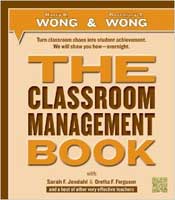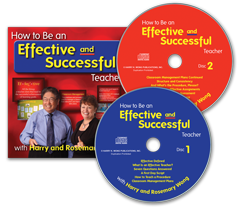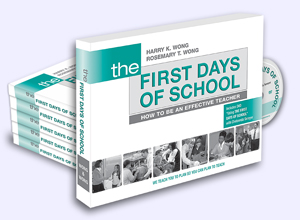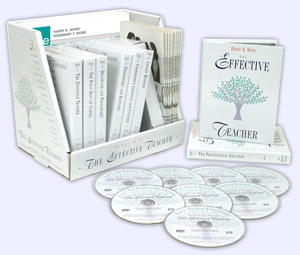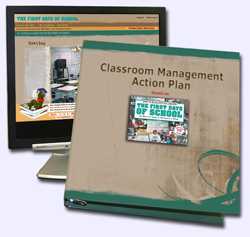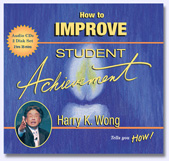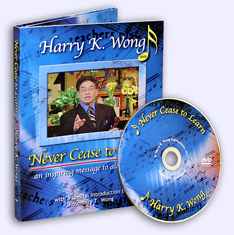|
 |

Special to the Gazette
December 2013/January 2014
Shaping a Solid Foundation Lucy's Story "The Foundation of Effective Teaching" There are many steps or procedures to follow in order to make a ceramic piece functional. It starts with the foundation and consistency of the clay, while it is being thrown on the wheel. As the clay is spinning in the center of the wheel, you take control so that it doesn't wobble and then you put it into shape. It is crucial to know how to move your hands as you shape your piece, and you have to repeat the procedure to be successful. Just as making a piece of pottery requires procedures, managing a classroom also demands them, too. When procedures are followed, the ceramic piece turns out well and can be put to use. When procedures are in place in the classroom, the children work and learn effectively. The students pay attention and participate and can work independently without creating chaos or disruptions. What happens when the structure of the fresh piece of clay, as it is being thrown, falters, or is too weak? It creates a mess and it falls apart! Luckily it is only clay and not a student; but the clay is flexible and can be reshaped. Likewise, students can be taught to rehearse procedures when they get out of shape. By following a routine with procedures, the students will have a strong support structure that becomes the backbone to their success as they learn any subject or ceramic technique. When effective teaching occurs in the classroom, you will find happy children, and the finished product is a successful classroom! Or a pretty cool and functional ceramic piece! Her Success Continues Lucy teaches in San Marcos, Texas, and is a very happy and successful teacher. Why? Her class is organized and well-managed. Her story is part of the forthcoming book, THE Classroom Management Book. Another Successful Career The research says that 16 percent of new teachers will drop out of teaching in their first year and 50 percent will drop out of the profession within their fifth year of teaching. You don’t have to become another drop out statistic. You’ve taken out a sizable student loan; your dream is to make a difference in the lives of young people; and no one going to dash your dreams! You can learn from those who have succeeded and have stayed in education. In 2003, Holly Bonessi sent us this letter.
I replaced a teacher who never returned from winter break. I walked in, NEVER having stepped into a classroom— Chaos! No structure, procedures, or routines. The prior teacher allowed students to do whatever they wanted—had yoga on Fridays and allowed 2-liter soda and candy and snacks. My mother, who is a teacher, said that I must have a plan and how important it is to be prepared. I worked on these procedures every day until April, when I finally saw progress. In that time, the students tried everything! They even signed a petition to fire me and gave it to the principal. I never gave up and I told them that—even though I cried daily after school. Finally, at the end of the school year, some of the most resistant students thanked me and gave me big hugs. I would not still be teaching today had I not understood one word, We saw Holly on October 30, 2013, for the second time, 10 years later. Today, she is chair of 18 people in the English department at Millennium High School in Arizona. She also conceived and is the advisor of the iTiger, the student news website, and is the advisor of the Quill and Scroll Honor Society. She is also working on her Master’s degree in Educational Administration. Why is she the success that she is? Organization and procedures. Highest Test Scores in the School Amanda Brooks teaches in Dyersburg, Tennessee, and said, “I was a terrified first year teacher on the eve of beginning my career.”
Modifying that presentation, she began her first day as a brand new teacher with a plan. Click here to see Amanda’s PowerPoint presentation. Two weeks into the school year, we received an email from Amanda and she said, “I am in the middle of my second week of school, and I couldn't ask for a better beginning to my career. “The first day went like clockwork. The day went absolutely flawless, and it was an awesome day.” At the end of her first year of teaching she wrote, “My first year has ended, and I am so thankful for that first day of school when I began practicing our procedures. I never had to waste time repeating what they should be doing or reprimanding them for bad behavior. It allowed me to be everything I wanted to be as a teacher and create an environment where students could just learn. “I simply taught and enjoyed my students.” Yes, you, too, can teach and enjoy your students. At the end of her second year of teaching, Amanda wrote, “I just completed my second year of teaching, and what a fantastic year I had! My state test scores came back and my class had the highest test scores in the school, and I am only saying this to encourage new teachers to get it right the first day and then enjoy the rest of their year.” This past year, Amanda completed her fourth year as a teacher and during the summer, the district hired her and her teaching partner to conduct a workshop for 28 new teachers coming into the district. She gave every new teacher a binder with her classroom management plan.
A Daily Closing Message Sarah Jondahl graduated from Western Kentucky University with a classroom management plan. We visited her classroom after she had been teaching for six weeks and observed a teacher with a well-run classroom that was flowing along like a well-oiled learning machine. There were no discipline issues; the class was on-task; the kids loved their classroom and the teacher; and examples of student work were posted all over the room to give it a climate of success. At the end of the class we saw her do something we had never seen before. Yes, we learned from a brand new teacher. She used a “Daily Closing Message.” If you have been in the business world, you know there are procedures for closing the store or the sales register system. Or, you’ve seen the procedure, “Will the last person leaving the room, please turn out the lights.” At the end of the day, Sarah distributed a slip of paper to each student. On the paper was a simple recap of everything they had learned that day. The students read the Daily Closing Message together. She told the students to take it home to their parents and read it to them so they would know what they learned in class that day.With the Daily Closing Message, the students are able to review what they learned in school. The Daily Closing Message also communicates with the home so parents can see what their child did and learned that day. Today, Sarah is in her 14th year of teaching. How did she succeed from Day 1?
Today, that one binder has grown to two binders—one for how to manage the classroom and a second for how to manage the instructional program. Sarah is one of the co-authors of our forthcoming book, Your Class Can Run Itself THE Classroom Management Book is coming soon. You’ll learn how to
Click here for a preview of the book. Email your name and email address to MSilva@HarryWong.com for notification of the book’s release and a very special prepublication price offer.As 2013 draws to a close, we wish to thank all of the educators who have shared with us through the years. Your stories are the best gifts to the profession. Perhaps you’ll find your piece in THE Classroom Management Book or hear it told in one of our presentations. We encourage you to continue sharing with us so we, in turn, can share your success with others. You—an effective teacher—are the most valuable gift you can give your students each and every day.
|
|||||||||||||||
|


 Gathered with 550 teachers from her school system for one of our preschool meetings, she saw a PowerPoint presentation a teacher used on his first day of school to explain his classroom organization and structure.
Gathered with 550 teachers from her school system for one of our preschool meetings, she saw a PowerPoint presentation a teacher used on his first day of school to explain his classroom organization and structure.  The teachers who succeed have a plan.
The teachers who succeed have a plan. Sarah showed us her binder from Western Kentucky University. Her university taught her how to organize a classroom, which is what management is all about.
Sarah showed us her binder from Western Kentucky University. Her university taught her how to organize a classroom, which is what management is all about.
